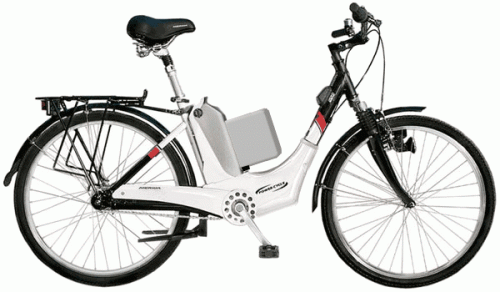Just trying to learn and understand here :) Which setup of the SAME motor would give a higher top speed and gearing is the same on both motor setup, everthing else being equal:
1. Motor running at 36volts with a controller set at 70amps max.
2. Motor running at 48volts with a controller set at 40amps max.
Thanks for any info. God Bless :)



Generally speaking, higher voltage will give you higher speed, so the 48v setup would be faster.
A higher amp rating will give you more hill climbing ability, but on flat ground won't matter much.
If the gearing is too fast, the motor might need more current than the limit to overcome wind resistance, so there are cases where the lower voltage, higher amp might give you a higher top speed, especially if climbing a hill.
Isn't there also an effect where the motor has a preferred voltage/amps range and if you give it less or more then it's not going to be as efficient? And if you give the motor too much stuff starts melting inside it.
- David Herron, The Long Tail Pipe, davidherron.com, 7gen.com, What is Reiki
Here is my experience with different voltage.
I have a Merida which is a factory built electric bike from the early days. This e-bike came with a 24-volt 400-watt motor and a 24-volt 25-amp controller running from 2 9-AH 12-volt lead acid batteries. Not a bad e-bike I would say it was just average, you know better than some and not as good as some others. The thing I like about this bike is the way it drives from the bottom bracket which allows the motor to take advantage of the 4-speed internally geared Nexus Hub. The bottom bracket on this bike was designed to allow the rider to coast while the motor is in use or to help the motor or to pedal without the motor with no noticeable drag. It is quite possibly the best design for a bottom bracket e-bike there is.
I modified the bike to use a 36-volt 25-amp controller running from 3 12-volt 12-AH bricks (lead acid batteries). This did add about 12 Lbs. to the bike but it helped with top speed and range. Before the conversion top speed was 16-MPH after the conversion the speed is 23-MPH. This is on a flat stretch of road near my house 6 tenths of a mile long without pedaling. Before 15 to 16 Miles range, after 20 to 22 Miles range. The range figures are at full throttle with no pedaling over the same terrain, to and from the nearby town on country roads with rolling hills. With the gears I have not found a hill the bike can not climb on it's own power. I have not taken the bike off-road so I am sure there are some very steep paths it would not climb, but normal roads or bike paths are no problem. One thing I might caution someone about is when you over-voltage a motor as I have done here it can sometimes become fatal to the motor. At the very least the extra RPM will cause the brushes to wear faster. I keep a close check on the temperature of the motor so it don't get it too hot. So far it has not been so hot I could not hold my hand to it.
I think reikiman is right about how muck power you put to a motor. Each motor has a sweet spot where it runs with it's greatest efficiency. There is also a point of saturation in the windings of the motor. The saturation point is where adding more amps will not generate a larger or more powerful magnetic field to turn the motor either faster or with more torque. At this point any extra power applied to the motor is converted to heat and melt-down begins. Melt-down can occur very rapidly so care must be taken so the motor is not destroyed in this manner.
My Merida

Chas S.
Chas,
;) :)
That's a nice looking Bike. Who sells them in the USA and what are the specs?
Peace Out, ;)
Gman
Chas, your encouraged as a community stakeholder to share your preferred future vision of our growing community http://visforvoltage.org/forum-topic/our-community-vision/330-it-seems-well-be-here-awhile-what-your-vision-future-
Peace Out, <img src="http://tinyurl.com/ysafbn">
Gman
I'm sorry to say they do not sell them any more, but the spec's can be found from my home page on the Merdia Specification link.
Chas S.
What the current limit of a controller really means is that it limits the motor voltage so that either the battery or motor current (depending on the controller) will not exceed the predefined level.
The top speed will most likely be higher for setup 2. A motor always produces more speed with voltage, and more torque with current. There is no saturation point, if you send more current to a brushed DC motor it will produce more torque, until it gets too hot and burns up. There is no limit to speed, if you send it more voltage it will go faster until the centrifugal force causes it to fly apart.
[url=/forum-topic/motorcycles-and-large-scooters/587-my-kz750-electric-motorcycle-project]KZ750 Motorcycle Conversion[/url]
[url=/forum-topic/motorcycles-and-large-scooters/588-fixing-my-chinese-scooter]900 watt scooter[/url]
Pic from http://www.electri